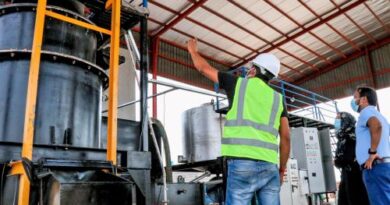India’s Decentralised RE Sector Workforce to Double by 2022-23

India’s decentralised renewable energy (DRE) sector, which generates, stores and distributes renewable energy locally, could employ nearly 100,000 more people by 2022-23, according to a new report.
While most of these jobs are expected to be long-term, women constitute only a quarter of the workforce in this sector. With this addition, the DRE sector’s workforce could double in size–from about 95,000 jobs in 2017-18 to 190,000 jobs by 2022-23–if the mini-grid market “continues to expand at a rapid pace.”
The number of informal jobs in the DRE sector is expected to remain stable at around 210,000, noted the first Powering Jobs Census 2019: The Energy Access Workforce report by Power For All, a coalition campaigning to scale DRE, released on July 15, 2019.
This comes at a time when India is facing a 45-year high unemployment rate, according to the Periodic Labour Force Survey released by the National Sample Survey Office in May 2019. Of nearly 61 million jobs created in India, over 22 years post-liberalisation of the economy in 1991, 92% were informal jobs.
The report captures DRE employment data for 2017-18 to establish a baseline that explores the link between Sustainable Development Goal (SDG) 7 (access to affordable, reliable, sustainable, and modern energy for all) and SDG 8 (inclusive and sustainable economic growth, employment, and decent work for all).
The report covers India, Kenya and Nigeria. The DRE sector is estimated to add more than 260,000 direct, formal jobs in these countries by 2022-23. In India, 36 companies in the sector were surveyed.
Renewable appliance firms are the “job engine”
End-user product providers–that is, companies that sell pico solar appliances (that use small amount of power for gadgets such as calculators, cameras and mobile phones), solar home systems, and other small, off-grid appliances directly to customers–are the “job engine of the sector,” the report said, adding that they are expected to add 86,000 direct, formal jobs nationwide by 2022-23.
These companies alone accounted for 97% of 95,000 DRE jobs created in 2017-18. In addition, they added 470,000 “productive-use jobs”–created by the DRE end users as a result of newly-acquired or enhanced electricity access–in the same year.
“The bulk of these direct, formal jobs (85%) are full-time and long-term, or lasting more than a year, as the average employee retention period is 39 months,” the report said.
Renewable energy technologies that are decentralized have substantial potential to provide a reliable and secure energy supply as an alternative to grid extension or as a supplement to grid-provided power, particularly in rural areas.
In case of high mini-grid penetration, where 500 MW is expected to be installed by 2022-23, “the mini-grid operators would provide more than 90,000 direct, formal jobs” and under a low mini-grid penetration scenario “of 60 MW worth of mini-grid energy, 11,000 direct, formal jobs would be provided”, the report noted.
The government’s support for productive-use applications such as solar water pumping could add about 10,000 additional jobs, the report added.
Fewer women, increasing youth workforce in DRE companies
Women’s participation in almost every type of DRE company is low, except for sector service providers–such as research and advocacy organizations. India’s workforce has fewer women than it did six years ago: no more than 18% in rural areas are employed, compared to 25% in 2011-12 and 14% in urban from 15%.
All companies have shown “high willingness to employ young people,” the report said. India will need to create 8 million jobs per year, noted a 2018 World Bank report on jobless growth.
Only 25% of the direct, formal jobs are held by women in the end-user product provider segment–in line with the average (23%) in the three countries surveyed. In India, women reportedly make up just 11% of the rooftop solar sector’s workforce compared to 32% globally.
The end-user product providers employ more women–about 60%–informally. Further, 86% of the direct, formal jobs created by such companies are skilled compared to less than half in the renewable energy industry globally. Youth (aged 15-24 years) constitute half the workforce in these companies.
While project developers and installers have 25% women among direct, formal employees and 44% of youth in their workforce, mini-grid companies have a poor gender balance, with women comprising only 2% of the workforce.
The manufacturing and upstream supply chain companies are hiring more women than the industry average, with women accounting for 37% of direct, formal jobs, the report added. These companies also employ a highly-skilled, young workforce, at 80% and 68%, respectively.
To Read more click Powering-Jobs-Census-2019
Graph Credit: India Spend




